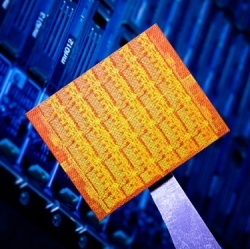
Samsung’s greatest R&D division, the Samsung Advanced Institute of Technology has reportedly published and detailed research on the Barristor in the journal Science on the 17th of May. This is the wonder chip that researchers were looking for.
We’ve talked about the amazing properties of Graphene before here. And we also reported on silicene’s arrival to the market before graphene in this article.
The most important fact about graphene is that this material allows electrons to move through it 200 times easier than silicon.
Practically, if you build a CPU using graphene instead of silicon, it will likely run at 300 GHz instead of 3 GHz, considering that the technology only achieves half of the normal graphene electron mobility.
IBM even thought about theoretical 1000 GHz chips using graphene.
Graphene was a difficult material to work with because it is a semi-metal, and the electron flow can’t be easily stopped.
Using it in cooling solutions is indeed a good idea as no current is passing through it, but the higher electron mobility might help dissipate the heat energy faster in a cooling base.
There was talk about a combination between silicon and graphene, but it seems that such a combination is not desirable.
Trying to transform graphene in a semiconductor radically decreases the much wanted electron mobility. That was the silicene research.
Getting back to our wonderful Samsung graphene chip, we can tell you that the Korean scientists developed the graphene-silicon Schottky barrier.
This will allow or stop the electron flow by controlling the height of the barrier.
Samsung also built a basic logic gate device and demonstrated that the device can successfully fulfill one function. The basic operation the device can manage is adding.
The transistor-like gate was called a Barristor.
Samsung’s research institute owns other 9 major graphene-related patents and is currently the only company to have built a working graphene computing micro device.
